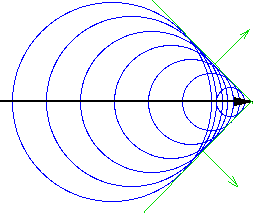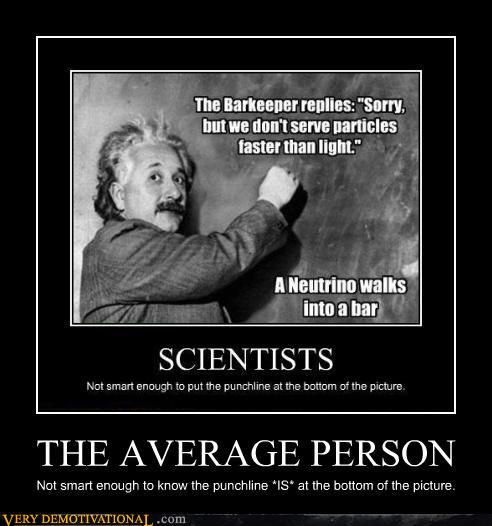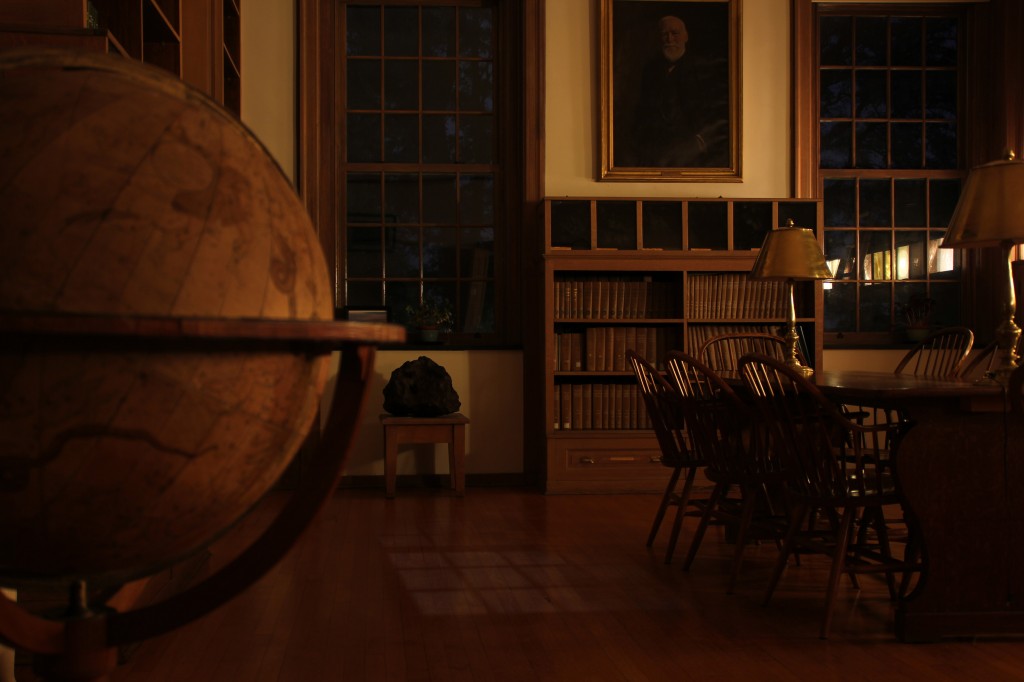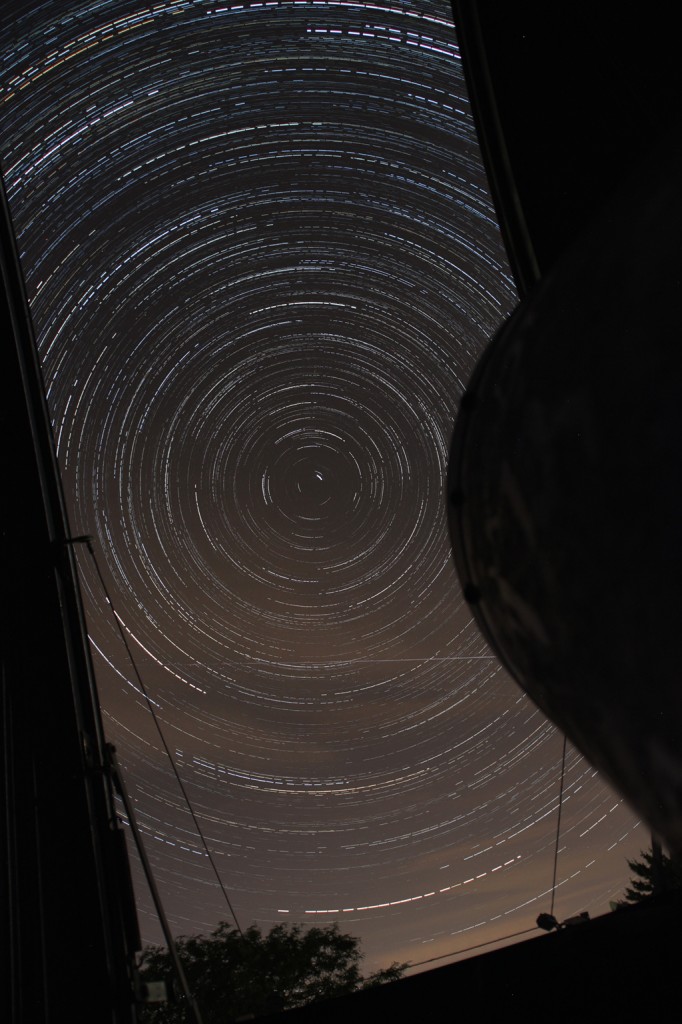A pair production between: Holly Capelo and Guy Geyer.

Holly: This fall was an exciting time to be studying special relativity, given that one of the most noteworthy recent science-news headlines was the possible violation of the universal speed limit, c, by superluminal neutrinos. Most of the press coverage on the OPERA report of a neutrino beam traveling through the Earth at a speed greater than light in a vacuum, was some variant on: “Einstein wrong, scientists baffled.” The attitude amongst most scientists I know was more like, “Let’s check the results, what a curiosity!” I myself wondered why Lorentz and Poincare’ weren’t given equal credit for the theory of special relativity.
As the process of investigating the results proceeds, we report on the most convincing evidence that there was no superluminal phenomenon detected, but first discuss what specifically was wrong with a paper that briefly offered the promise to explain the results using special relativity. Relativity can be counter-intuitive at times, so as a sanity check and to enrich the discussion, I have asked a fellow student, Guy Geyer to add his opinion on the same letter (which, according to Denis Overbye’s reporting, has been revised and is now under peer review, following the admission by the author of some of his early mistakes). Guy and I were asked to do a similar exercise at the culmination of a quarter-long course in Relativity taught by Prof. Fred Ellis this fall.
Since the Opera experiment released its results in September it has already received over 140 (and counting) citations from theories trying to justify the findings. Dr. van Elburg of the Department of Artificial Intelligence at the University of Groningen offered up a simple explanation for the recently-observed apparent superluminal motion of neutrinos passing through the Earth between an origin at Gran Sasso Italy to CERN Switzerland. He suggests that the measurement of the time of flight of the neutrino was actually measured from the frame of the GPS satellite, where length contraction would reduce the distance traveled according to the GPS clock, therefore shortening the time of required to cover the distance.
His paper was heavily reported upon, probably because it seems to be a simple solution that invokes special relativity and exactly reproduces the discrepancy in timing reported in the OPERA publication. This is attractive in some respects; after all, it is often a simple oversight that can disrupt a complicated process. Although, the solution may be a little too simple, since in order for special relativity to offer a sufficient explanation, one needs to establish that the Earth and satellite frames are inertial within the accuracy of the experiment – otherwise General Relativity must be invoked. As for the exact value of 64 nanoseconds, the striking similarity to the reported discrepancy may be accidental since the calculations made in the paper are done to very low-order precision.
Here are the elements of the experimental setup to consider:
The general procedure of measuring the neutrino flight time consist of a few procedural steps: 1. Determine the distance of the neutrino flight path baseline using a satellite – referred to as geodesy; 2. Bounce a radio signal originating from CERN off of a satellite towards the Gran Sasso location for the purpose of synchronizing cesium atomic clocks on either end (fiber optic cables running through the Earth were used to very verify the synchronization of the clocks and agreed to within 2 nanoseconds); 3. Having synchronized clocks at the neutrino production and detection sites, measure the distributions of departure and arrival times of the neutrinos in the Earth frame. The steps were carried out roughly in this order, although the geodesic measurements are on-going, as small shifts in the Earth’s crust need to be accounted for.
Guy: Regarding #2, This is the part of the experiment that I thought was most unclear… It isn’t really explained that well how exactly the OPERA clocks were synced. If they accounted for spec. and gen. relativity correctly to sync their clocks to earth frame time, then there shouldn’t be a problem. However, it’s still not clear to me that this is what is happening in their experiment.
Holly: You’re right, the original paper gives a schematic of these elements, but it isn’t entirely clear which calculations were made or how interdependent each of these aspects of the setup really are. Assuming that they are fairly independent, it seems to me that once the clocks are synchronized and the distance determined, then the satellite frame of reference becomes irrelevant to the measurement. Van Elburg defines a “foton” as a particle traveling at light speed, which could refer to either a radio photon used to synchronize clocks or to the neutrino beam itself. In failing to distinguish between these separate sets of events and paths in spacetime, he does not establish the need to consider the GPS frame when making the time measurement of the neutrino’s flight.
Van Elburg maintains that he is not concerned about a mistake in the time synchronization, but that the experiment could have been setup in the GPS clock frame.
Guy: I didn’t take away this impression – maybe there is something that I missed, but I thought he was saying that the mistake CERN made was that they didn’t properly account for how they were synchronizing the clocks.
Holly: Yes, I think that his argument boils down to a problem with the synchronization between clocks, but I ‘m not convinced that HE realizes that. I mean that Van Elburg claimed that the experiment was set up in the satellite frame and then proceeded to make some length contraction calculations of the baseline, but he doesn’t address any of the accompanying problems that come from trying to take coordinated time measurements between stationary and moving clocks. In particular, path- and velocity-dependent time dilation effects and a lack of synchronization with the Earth clocks would ensue.
I think the bottom line is that, although the details of the synchronization were not very explicit, Van Elburg’s premise that the experimenters forgot to change reference frames is easily refuted by looking to the original OPERA paper. The authors of the OPERA paper were conscious of having transformed back to the Earth Frame after measuring the baseline:
“The other fundamental ingredient for the neutrino velocity measurement is the knowledge of the distance between the point where the proton time-structure is measured at CERN and the origin of the underground OPERA detector reference frame at LNGS. The relative positions of the elements of the CNGS beam line are known with millimetre accuracy. When these coordinates are transformed into the global geodesy reference frame by relating them to external GPS benchmarks, they are known within 2 cm accuracy.”
So that would put the experiment back – at rest – on Earth once the baseline has been determined.
Guy and I weren’t the only ones to point out some ambiguities in the van Elburg paper which may have stemmed from the non-explicit nature of the OPERA paper itself. Such missing details make it difficult for outsiders (such as van Elburg or ourselves) to speculate about the experimental setup and any issues it may have had. Experimentally reproducing the results and proving the existence of physically related phenomena are likely to be more definitive tests of the claimed results.
More recently and perhaps more authoritatively, some relative insiders, involved with the sister project to the OPERA group known as ICARUS, have now produced a manuscript to be published in the Physical Review Letters verifying that none of the expected byproducts of superluminal motion were detected. Apart from the specific timing measurements, they considered by analogy one example where particles are known to travel faster than light speed in a given material**, which creates Cherenkov radiation. They argue that since neutrinos decay into additional particles as they lose energy, this energy loss both caps the maximum velocity of the particles and leads to the expectation that the decay products should have been detected. Using the same neutrino beam as the OPERA group, they found no such evidence for the expected decay behavior.
 **Note that although the comparison to Cerenkov radiation is by analogy (the neutrino beam was claimed to have traveled faster than the vacuum speed of light) the fact that the particle beam did travel through a medium was lost on some people, leading to an embarrassing gaffe by the Italian Ministry of education, congratulating themselves for contributing to the construction of a “tunnel” between the two detector points (separated by over 500 KM, the longest tunnel in the world is about 20% this distance!) This statement received some cool response here. However, this is not the only tunnel that has been conjured in response to the findings, as dozens of theories evoking quantum behavior have arisen as well.
**Note that although the comparison to Cerenkov radiation is by analogy (the neutrino beam was claimed to have traveled faster than the vacuum speed of light) the fact that the particle beam did travel through a medium was lost on some people, leading to an embarrassing gaffe by the Italian Ministry of education, congratulating themselves for contributing to the construction of a “tunnel” between the two detector points (separated by over 500 KM, the longest tunnel in the world is about 20% this distance!) This statement received some cool response here. However, this is not the only tunnel that has been conjured in response to the findings, as dozens of theories evoking quantum behavior have arisen as well.





